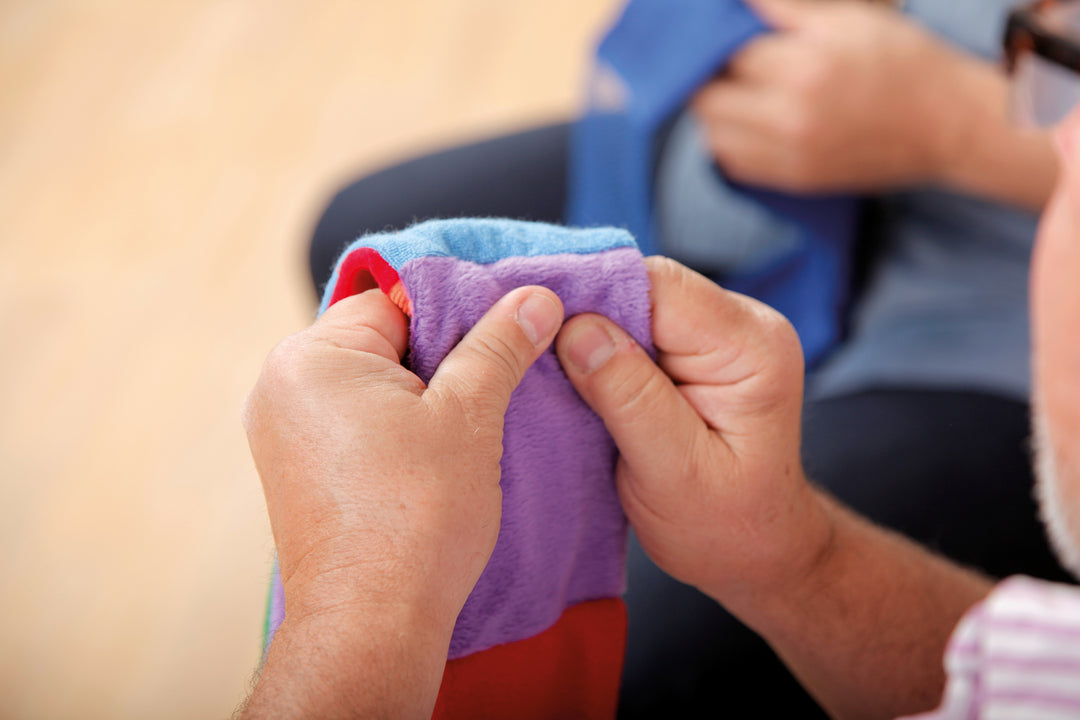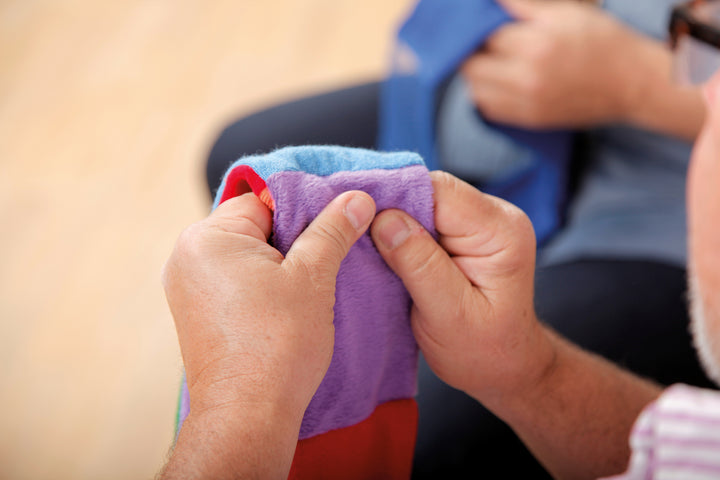Feeling tube for contact, relaxation and observation
Author: Corina de Boer-Vreeke
Supervisor of children and mother
Contact sensor tube 
Precious contact
A dear colleague of mine is a volunteer in a department where elderly people with dementia live. She tries to make contact with the people with hand massages and touch and feel games.
Hand contact
For some people, this works immediately. Through hand contact, the soft, respectful touch, the care, the direct attention, they get in touch. Bowed heads are raised. Eye contact is sought. Surprised looks. Cautious smiles. It is beautiful to see, according to my colleague.
Own experience
I still remember what it did to my grandmother. She was 92 years old and often far away from the world around her. How nice it was to be able to take her hand. To gently stroke and knead it and at the same time sing the songs she still knew from the past. The lights in her eyes, the beautiful, relaxed smile... These moments are etched in my memory as precious memories.
If it's too much
Sometimes, however, direct contact is too much. Hands are withdrawn, heads are turned away. Skin contact is too close. It is exciting. People are no longer used to it.
Observe , be patient and try with the feeler tube
If direct contact is not (yet) possible, a tactile stroke can provide a solution. With this tactile material with different structures or a marble in it, you can work step by step towards making skin contact. Below are some suggestions.
Building contact
You can give the tactile tube to people or put it on their lap or the tray of their wheelchair. Then sit next to or opposite them and watch. See what they do with the tube. Is there interest in the tube or does it stay on their lap/tray? Do they feel? Do they let the tube pass through their hands to feel the different substances or move the marble? Is eye contact made? Observe, be patient and try!
To pretend
Does the snake stay there? Pick it up yourself. Feel it. Let it pass through your hands. Tell what you are doing and show it. Then put the snake back where it was and look…
 To observe
To observe
Is the stroke picked up? What is done with it? Describe what you see to your client. Ask if they feel anything and if so, what. If necessary, tell them what they can do with the tube. What they can feel. If there are openings, see if you can feel the tube together or guide your client's hands in feeling. Is interaction possible?
Development of the sense of touch
Step by step you can work on making contact. On the development of the sense of touch, which is so important in this process. What do you feel? What does that do to you? How do you react to touch? There are so many questions that can be answered if you take the time to work on making contact. Direct skin contact or e.g. with one of the feeler tubes.

Relaxation
The tubes have been tested extensively by the people in the department where my colleague works. If they were not used to make contact, they were a means of relaxation. Some people dream away with them. They fiddle with the tubes while they are half asleep/shutting down. That has a relaxing effect.
I myself am convinced that this tactile material has even more beneficial functions, which my colleagues and I have not yet discovered. I would like to hear your experiences with these tactile tubes, so that we can learn from each other 😊.
































Leave a comment